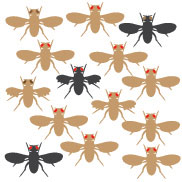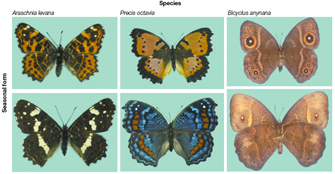« Prev Next »

The Collective Set of Alleles in a Population Is Its Gene Pool

What is variation in a gene pool?
Genetic variation within a population is measured according to the number of different alleles of all genes and the frequency with which they appear. Variation is high when there are many different allelic forms of all genes and when there are many different combinations of those alleles. However, genetic variation is constantly changing. Different allelic forms of a single gene can appear and disappear from time to time within a single group of organisms. This means that the gene pool of a population is dynamic and can change at any moment for a variety of reasons. In addition, the rate of change within a gene pool can vary at different points in time.


Can gene pools vary within populations?
From the perspective of a geneticist, a population is a group of organisms of the same species that interbreed. This may mean that the group of organisms all live in the same area, or that they can travel over long distances to mate. Over time, a population's gene pool may change. A variety of different factors can account for these changes, including migration of new individuals into the population, death of a large number of individuals within the population, or environmental factors that favor certain traits over others.
Further Exploration
Key Questions
eBooks
This page appears in the following eBook





















